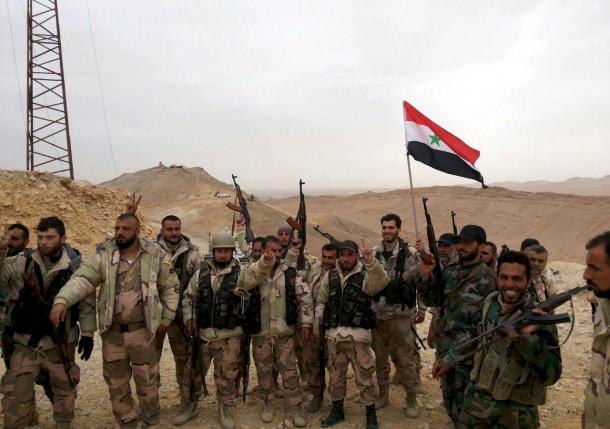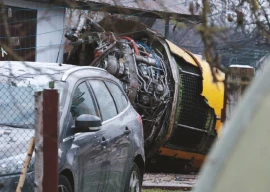
Army sappers were defusing mines and bombs planted by IS in the city's ancient ruins, a UNESCO world heritage site where the jihadists sparked a global outcry with the systematic destruction of treasured monuments.
Syria army takes Aleppo rebel town in new advance
"After heavy fighting during the night, the army is in full control of Palmyra -- both the ancient site and the residential neighbourhoods," a military source told AFP.
IS fighters pulled out, retreating towards the towns of Sukhnah and Deir Ezzor to the east.
IS overran the Palmyra ruins and adjacent modern city in May 2015.
It has since blown up two of the site's treasured temples, its triumphal arch and a dozen tower tombs, in a campaign of destruction that UNESCO described as a war crime punishable by the International Criminal Court.
The militants used Palmyra's ancient amphitheatre as a venue for public executions, including the beheading of the city's 82-year-old former antiquities chief.
The oasis city's recapture is a strategic as well as symbolic victory for President Bashar al-Assad, since it provides control of the surrounding desert extending all the way to the Iraqi border.
IS, behind a string of attacks in the West including last week's Brussels bombings, is under growing pressure from Syrian and Iraqi military offensives to retake key bastions in its self-proclaimed "caliphate".
On Thursday, the Iraqi army announced the launch of an offensive to recapture second city Mosul, held by the militants since June 2014.
IS lost at least 400 fighters in the battle for Palmyra, said the Syrian Observatory for Human Rights, a monitoring group.
"That's the heaviest losses that IS has sustained in a single battle since its creation" in 2013, Observatory director Rami Abdel Rahman said.
Syria rebels seize key regime town on Hama-Aleppo road: monitor
"It is a symbolic defeat for IS comparable with that in Kobane," a town on the Turkish border where Kurdish fighters held out against a months-long siege by IS in 2014-15, he added.
Russian forces, which intervened in support of longtime ally Assad last September, have been heavily involved in the offensive to retake Palmyra despite a major drawdown last week.
Russian warplanes conducted more than 40 combat sorties in just 24 hours from Friday to Saturday, targeting "158 terrorist" positions, according to the Russian defence ministry.
Elsewhere in Syria, a ceasefire in areas held by the government and non-jihadist rebels has largely held since February 27, in a boost to diplomatic efforts to end a five-year war that has killed more than 270,000 people.
The recapture of Palmyra sets government forces up for a drive on the militants' de facto Syrian capital of Raqa in the Euphrates valley to the north.
Humanitarian fiasco: Missile strikes on Syria schools, hospitals kill 50
"The army will have regained confidence and morale, and will have prepared itself for the next expected battle in Raqa," a military source said on Saturday.
With the road linking Palmyra to Raqa now under army control, IS fighters in the ancient city can only retreat eastwards towards the Iraqi border.
Palmyra was a major centre of the ancient world as it lay on the caravan route linking the Roman Empire with Persia and the east.
Pledging Russian support for the offensive to retake the city earlier this month, President Vladimir Putin described it as a "pearl of world civilisation".
Situated about 210 kilometres (130 miles) northeast of Damascus, it drew some 150,000 tourists a year before it became engulfed by Syria's devastating civil war




1732626034-0/BeFunky-collage-(92)1732626034-0-165x106.webp)


1732618327-2/Untitled-design-(7)1732618327-2-270x192.webp)









COMMENTS
Comments are moderated and generally will be posted if they are on-topic and not abusive.
For more information, please see our Comments FAQ